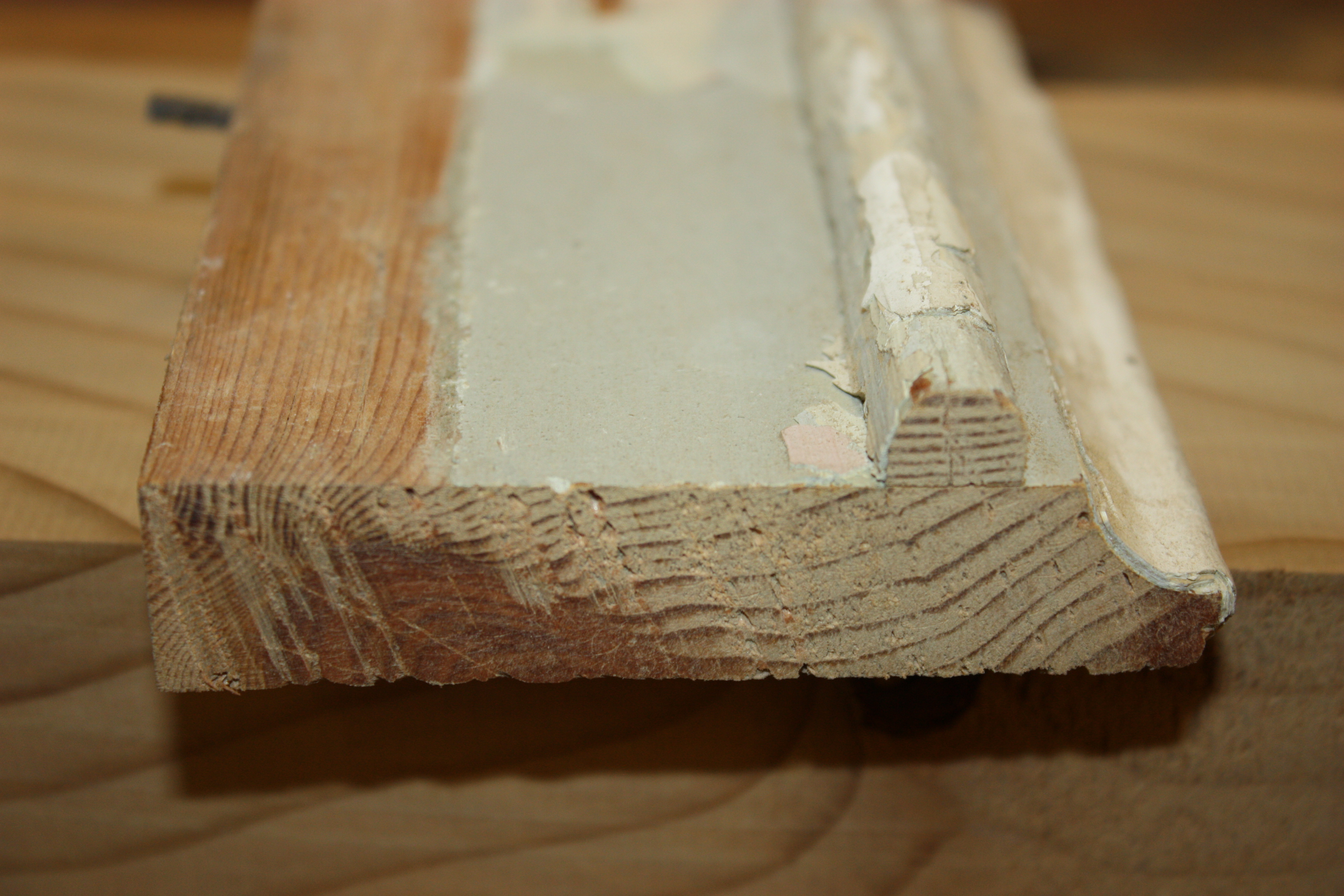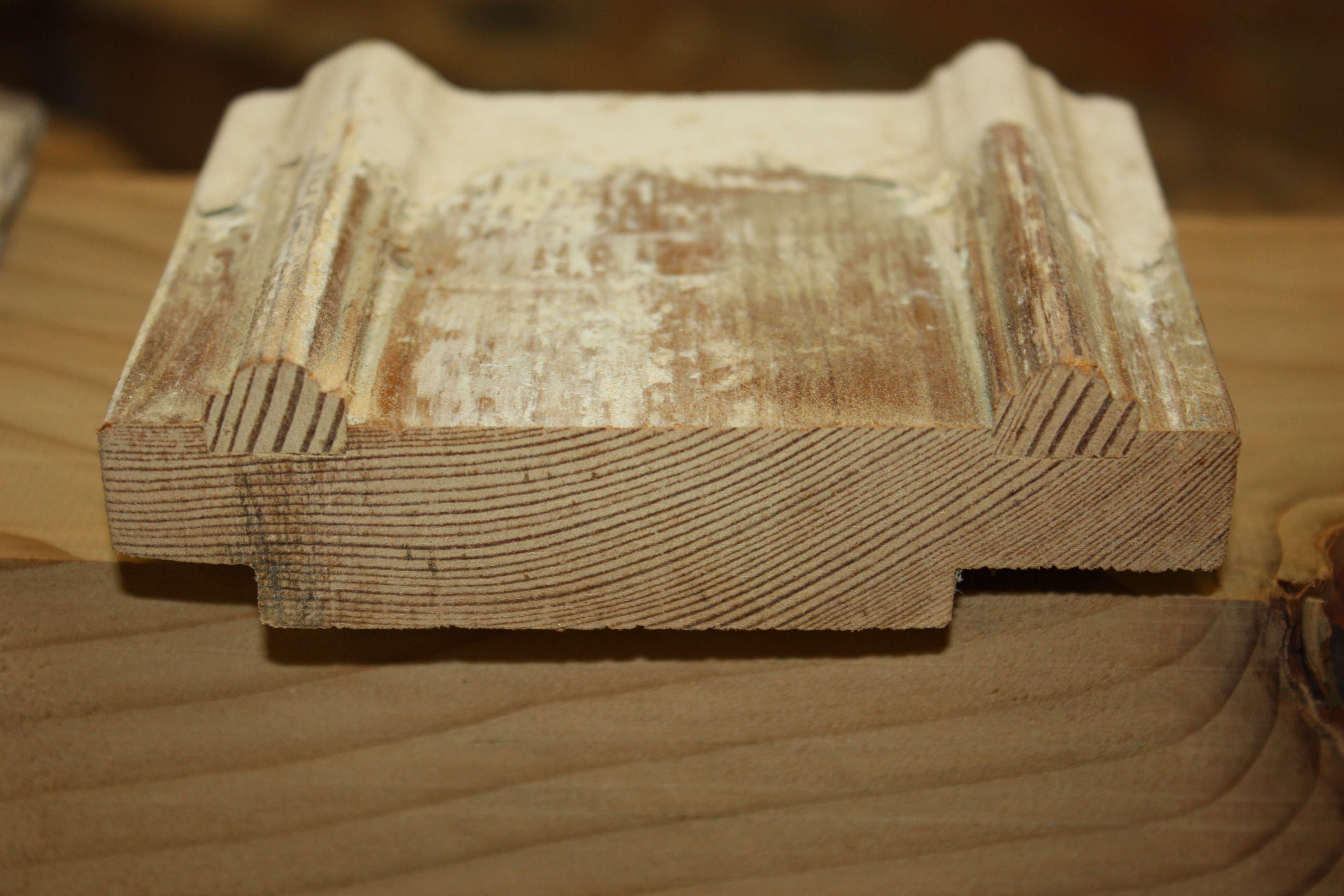I'd be interested to hear how you'd make my architrave up from bits. The best I can come up with is this
What I've not shown is that you'd probably have to mould the semi-circle on one end of a larger piece of wood, then rip back, plane smooth then stick and pin down onto the base piece. Ditto the top LH piece, remembering that all of them are only 14mm thick...just love trying to pass them through with a powerfeeder.
I fully accept your comment re curling/cupping and that IS a valid reason for making them up piecemeal. What it is NOT, IMO, is 'less trouble'.




































